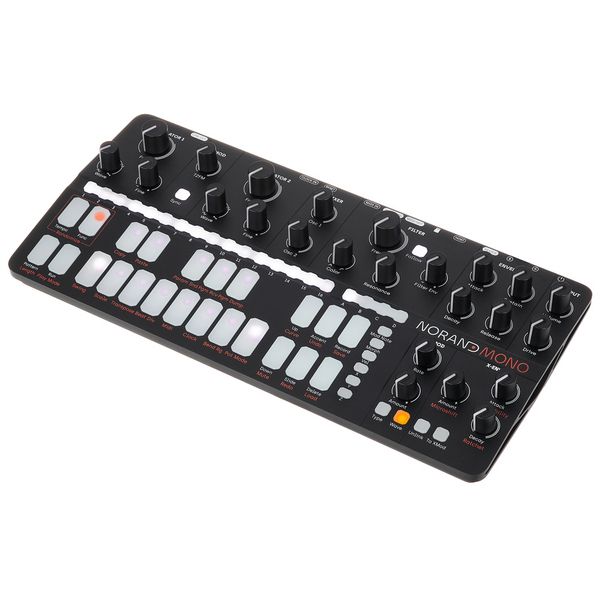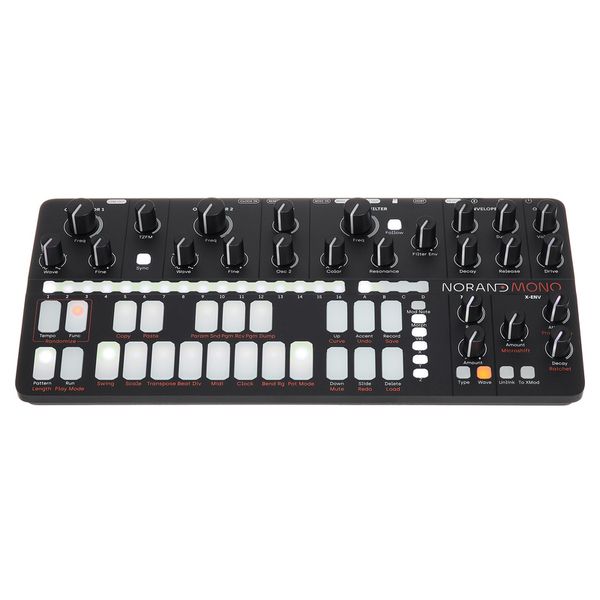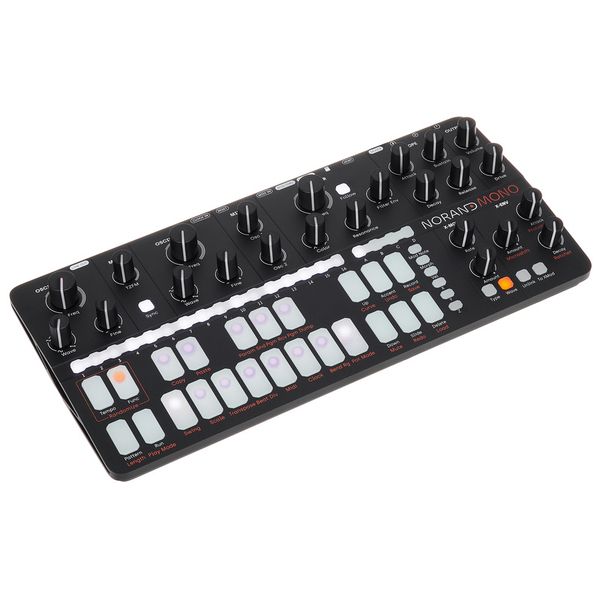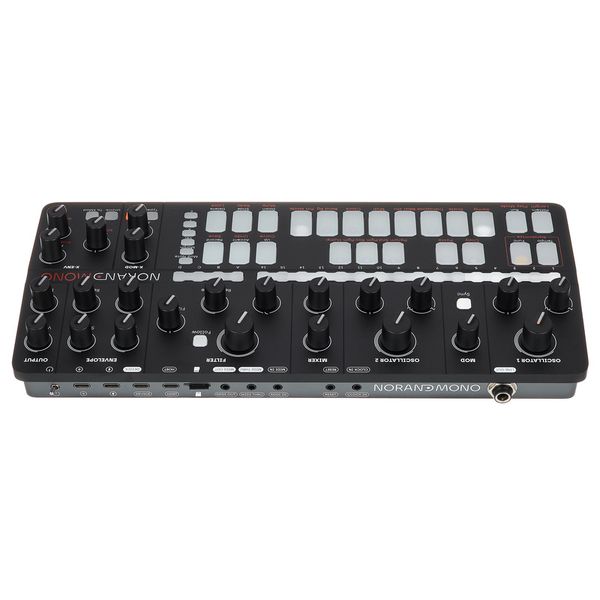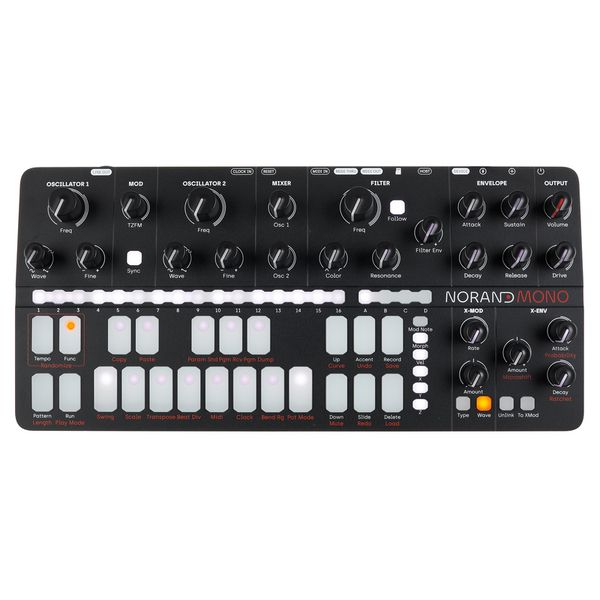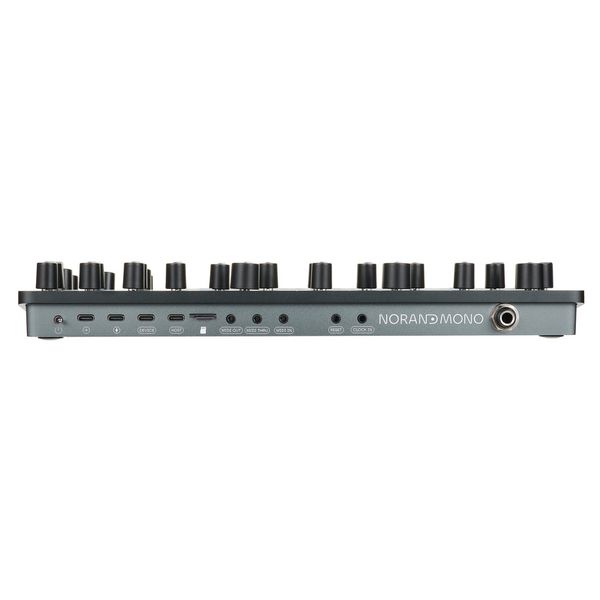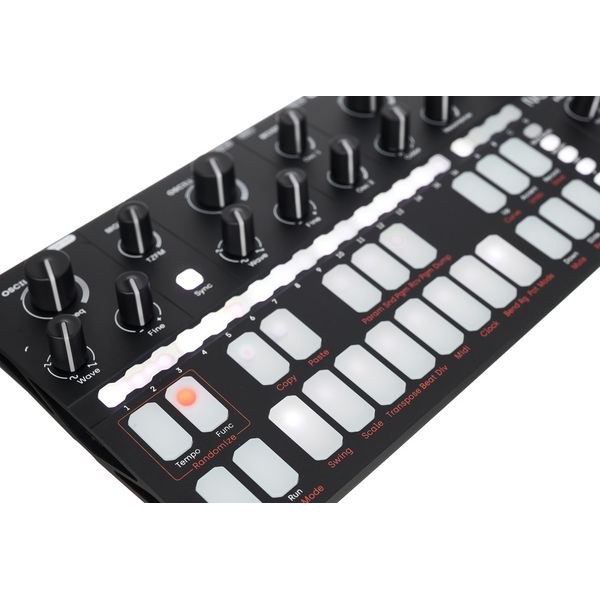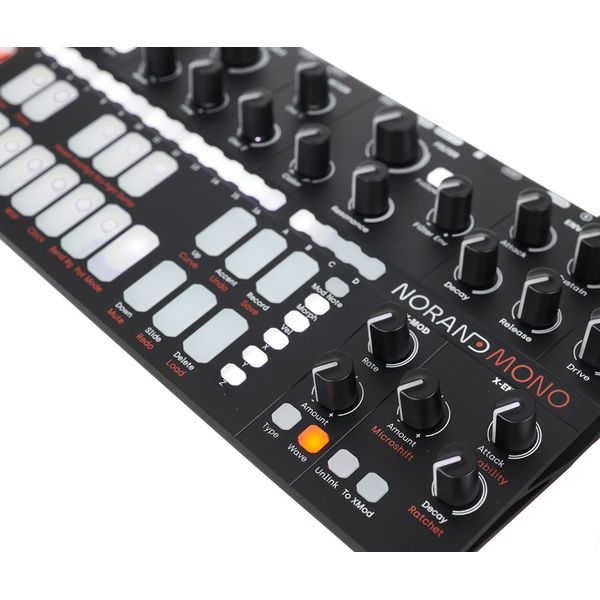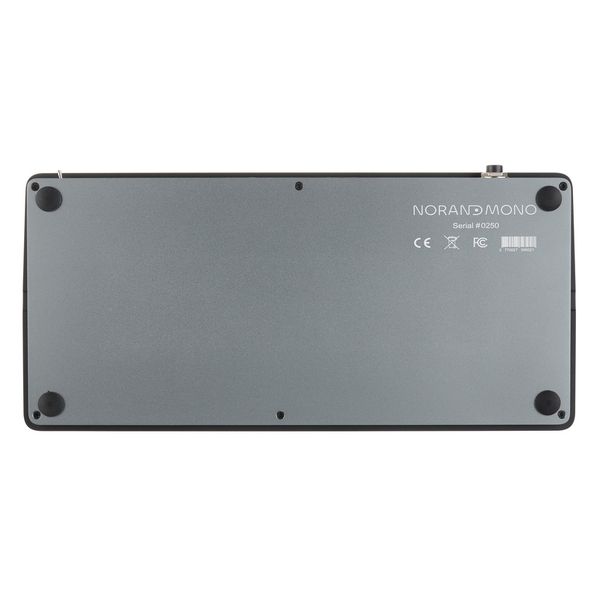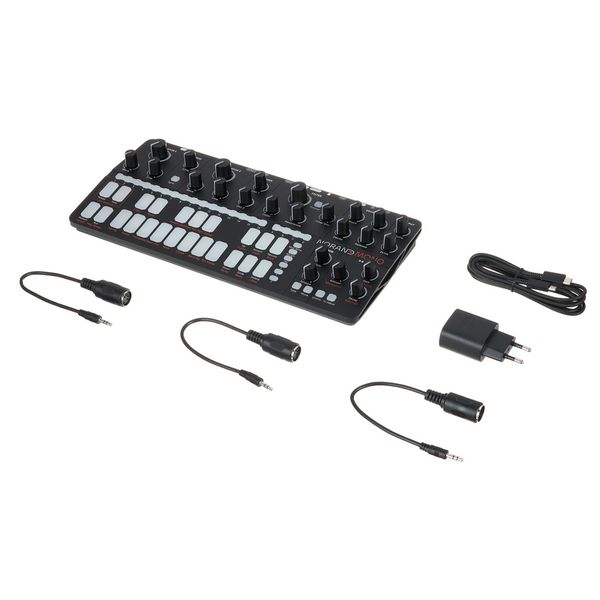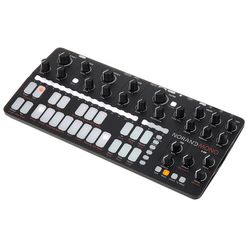Sintetizador analógico monofónico
- Con secuenciador y funciones de modulación
- Motor de síntesis totalmente analógico
- Dos osciladores analógicos con formas de onda ajustables continuamente
- Modulación de frecuencia 'Through-Zero'
- Función de sincronización 'dura'
- Overdrive de filtro
- Filtro multimodo de 3 polos
- Coloración del filtro continuamente ajustable
- Envolvente ADSR
- Overdrive suave
- 13 envolventes AD dedicadas
- 20 moduladores multimodo
- Moduladores: 5 formas de onda, configuraciones de tipo: Libre/Sincronizado/Audio-Rate, Audio-Rate suavizado, cuantificado en OSC1, Libre de 0.1 a 80 s
- Envolvente: Segmento de Decay de 10us a 20s
- Automatización: Número ilimitado de proyectos en la tarjeta SD
- 64 patrones con memoria de patch por proyecto
- Función Deshacer-Rehacer (hasta 1024 acciones)
- Varias opciones de aleatorización: Paso aleatorio, parámetro, nota de mod y más
- 64 patrones con memoria de patch por proyecto
- 23 potenciómetros RGB iluminados
- 24 botones iluminados
- Nivel de salida: +15 dBu máx.
- Impedancia de salida: 200 Ohmios
- 1 salida de audio principal (jack de 6,3 mm, balanceado)
- 2 entradas Eurorack Clock/Reset (jack de 3,5 mm)
- MIDI In/Out/Thru (jack de 3,5 mm)
- 2 USB Host/Dispositivo (USB-C)
- Ranura para tarjeta microSD
- Conector de alimentación (USB-C)
- Modo de ahorro de energía para alimentación USB
- Fuente de alimentación: 5 V DC, 2 A
- Incluye fuente de alimentación, 3 adaptadores MIDI (conector TRS de 3,5 mm de tipo A a MIDI de 5 pines) y guía de inicio rápido
- Dimensiones: 350 x 150 x 35 mm
- Peso: 1,6 kg (aprox.)
Disponible desde
Septiembre 2023
número de artículo
569248
Precio por
1 Unidad(es)
Construcción
Sobremesa (Desktop)
Voces de polifonía
1
Motor de sonido
Analógico
Interfaz MIDI
1x In, 1x Out, 1x Thru
USB-anslutning
Sí
Efectos
No
Arpeggiator
No
Salida digital
No
Display
No
Ampliaciones opcionales
-





